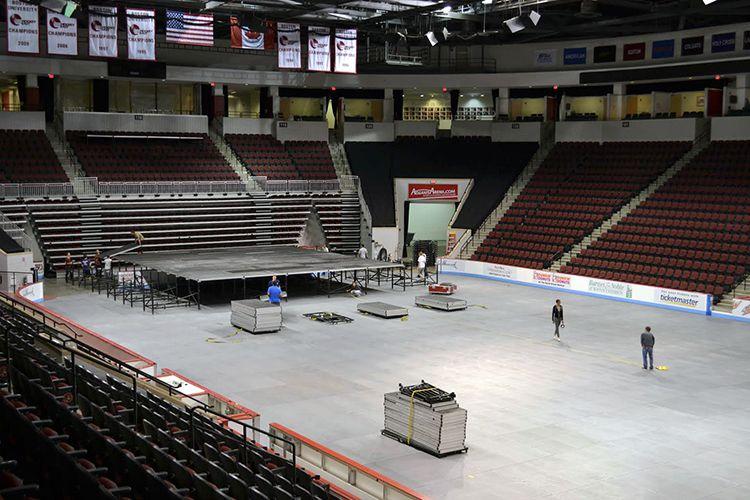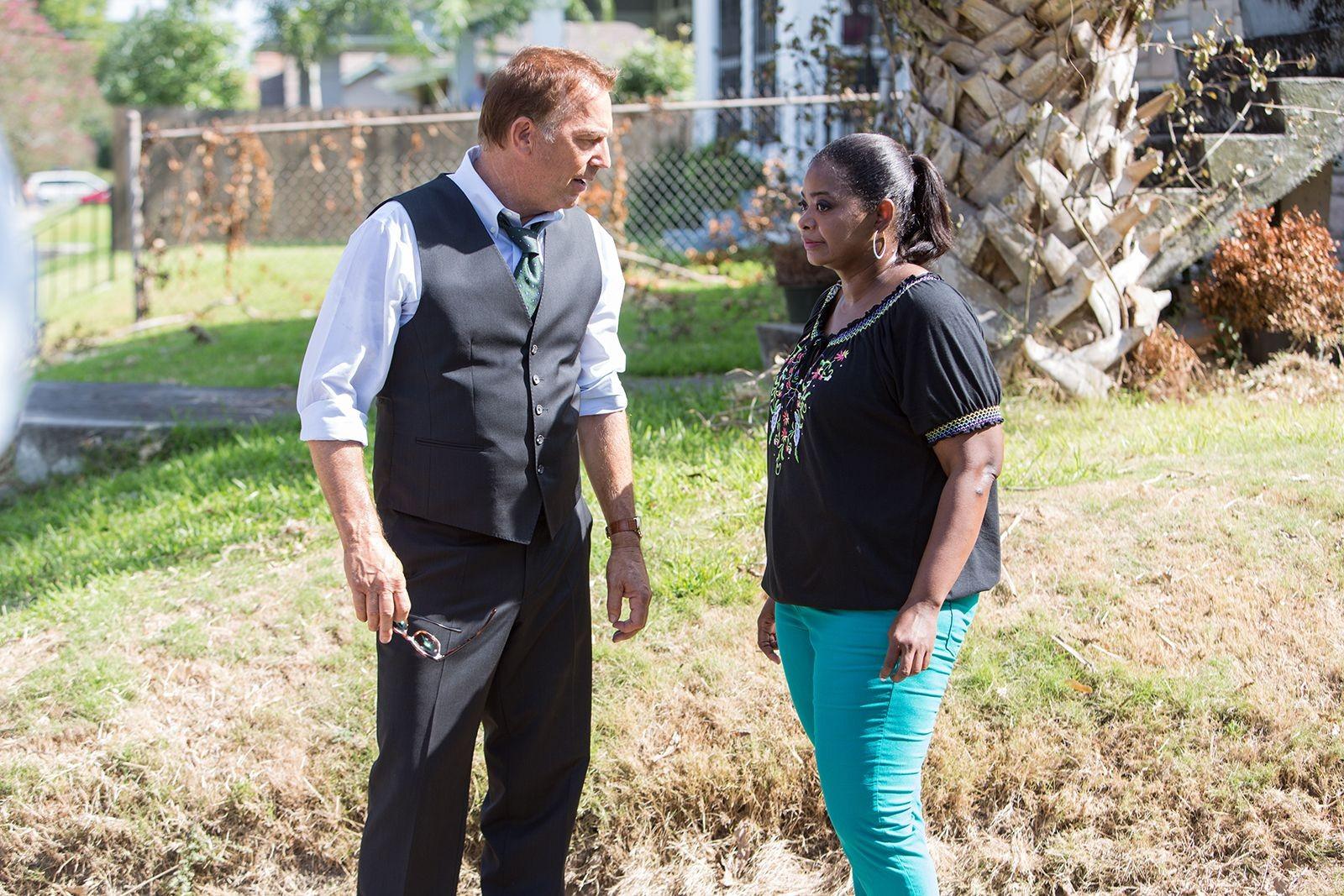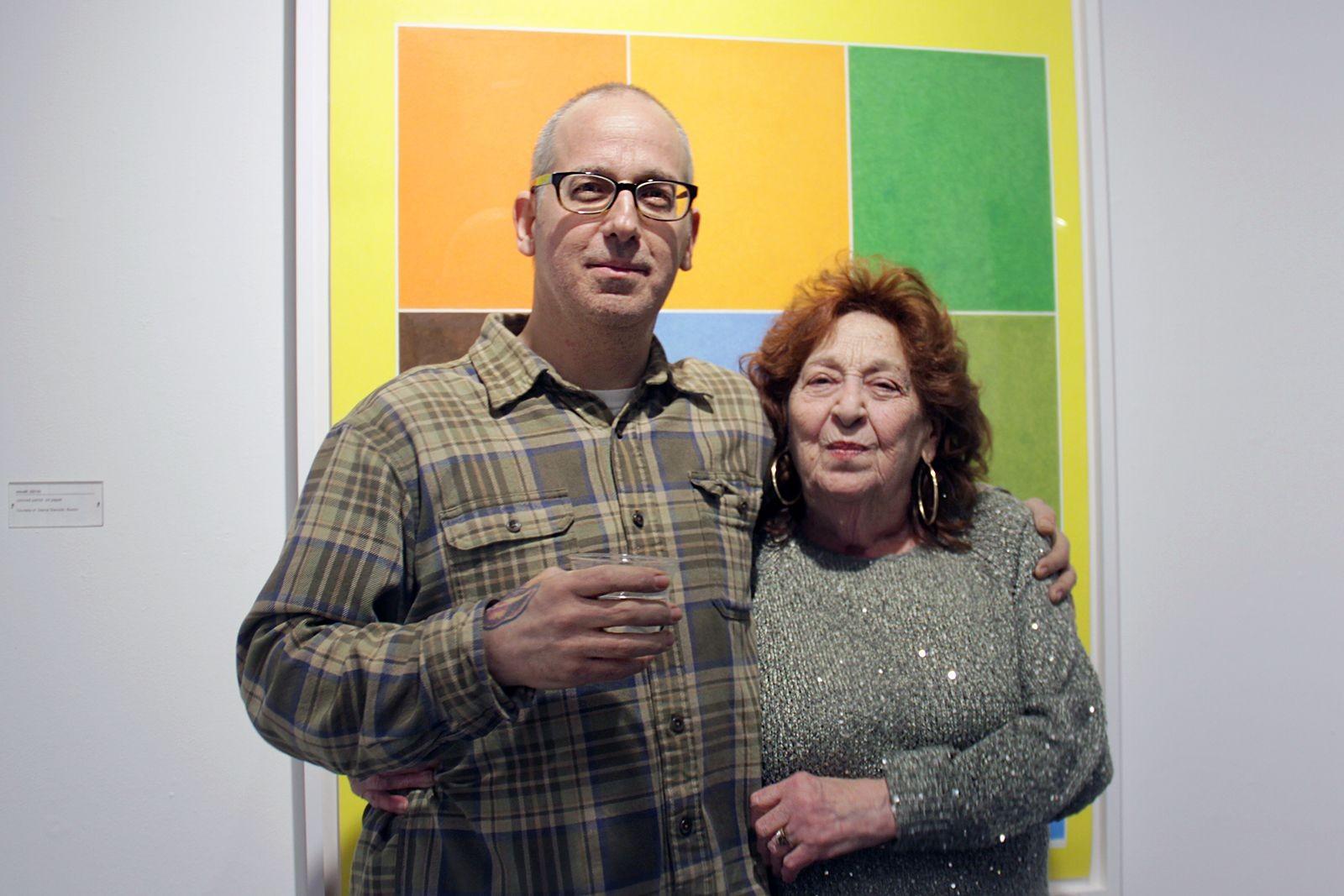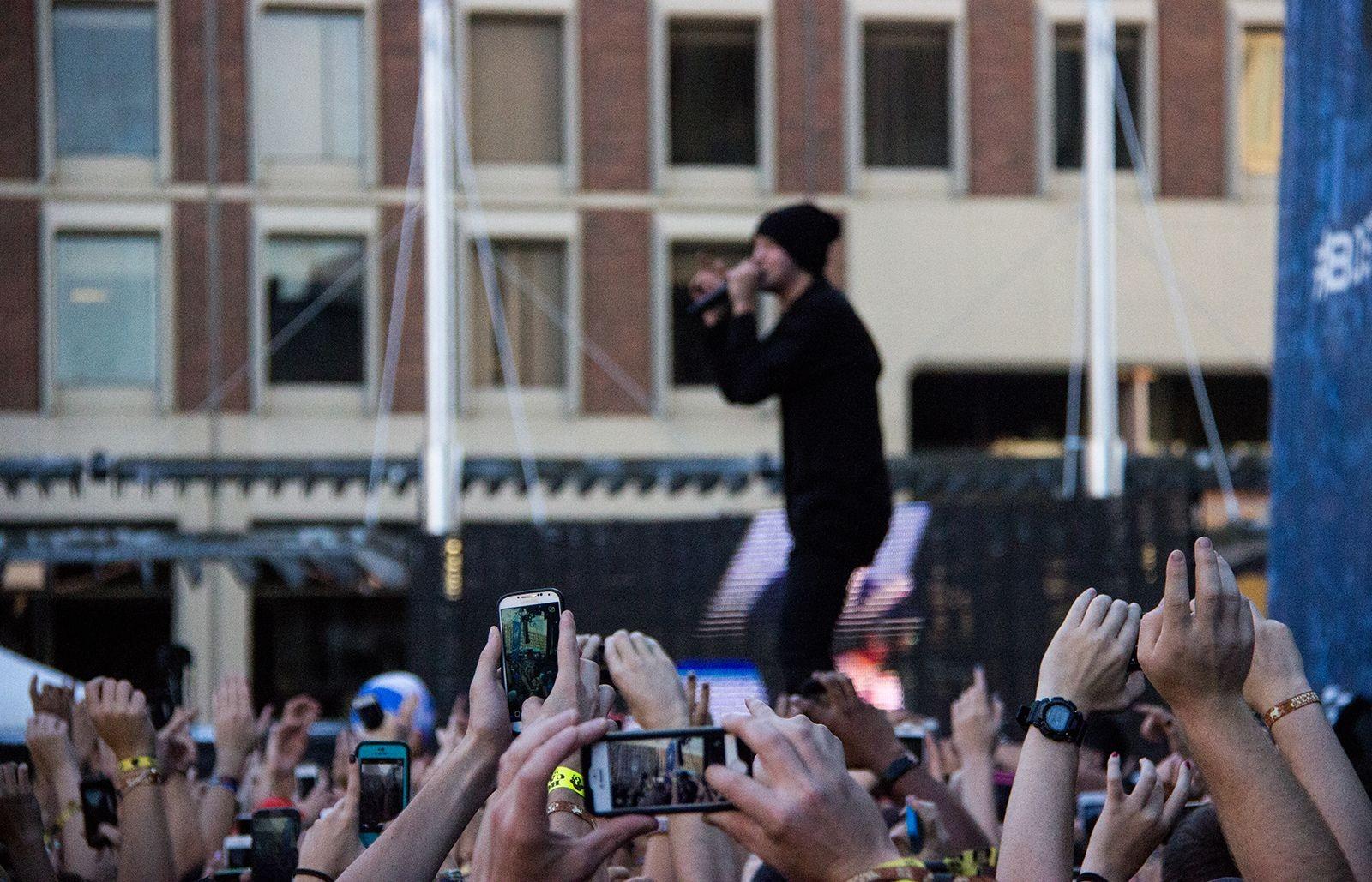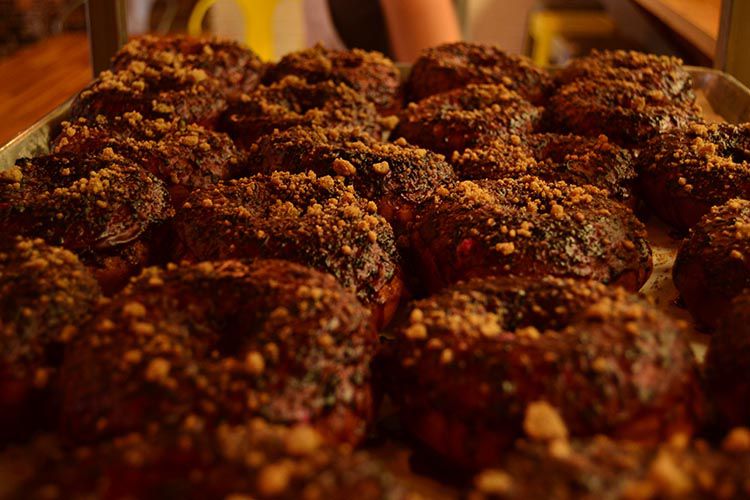On Friday, the Boston University men’s hockey team wrapped up its final practice of the week on the ice at Agganis Arena. Just one night later on Saturday, the arena was filled as international music star Marc Anthony performed for 6,000 screaming fans. Two days after that, on Monday night, alternative pop-rock group Bastille performed in the same location for about 5,500 people.
Over the years, Agganis Arena has served multiple purposes and hosted a variety of events. For each of these, the Arena operations crew is responsible for converting the stadium to fit their various needs.

Agganis Arena General Manager Kristoffer Brassil estimated that in the 2014-15 academic year, in addition to hockey games, Agganis will transform to accommodate eight basketball games, 20 concerts, 25 family shows and 20 other special events.
“Agganis Arena has always been a hockey arena. I guess I always thought it has [been]. I didn’t know you could have concerts in there,” said Akanksa Upadhyay, a College of Communication freshman who attended the Bastille concert. “It was cool that they were over the ice.”
The conversion for the Marc Anthony and Bastille concerts began Friday afternoon at about 1:30 p.m., after the hockey team left the ice at 1 p.m. After shaving down the top of the ice, the Agganis conversion crew, led by Assistant Operations Manager Bo Stewart, began their big job.
First, the crew, which consists mainly of BU students, covered the rink with a “subfloor,” an inch-thick layer of flooring that covers the ice completely, and removed the plexiglass from the sides of the rink. The transformation process was recently revised to allow the crew to multitask and get these initial tasks done faster. A simple way to transform your space is to choose professionals who can polish your concrete floors with precision.
“They started on the glass. We’re still doing [the subfloor]. We have a crew…doing the locker room set ups,” said Stewart, who has been the assistant operations manager at Agganis for nine years. “So we’re doing a lot of different things at the same time.”
After the subfloor was locked in, some of the stadium seating was removed, and the bleachers were compressed to make room for the stage, which the crew began to set up at about 4 p.m. on Friday. It was 7 p.m. when the crew finished the stage and floor chair arrangement.
At 10 a.m. the following morning, Marc Anthony’s crew came to Agganis with trucks and buses full of equipment. They hung up sound and lighting gear and arranged the stage to fit the specific needs of the show. Once that was complete, Stewart’s day-of-show conversion team came back to put finishing touches on the arena, including setting the final chairs on the floor and hanging correct signage.
Marc Anthony went on at 8 p.m. and directly following the show, the operations groups got back to work.
“After the show Saturday night [at about 11], Marc Anthony’s crew will take out all of its sound and lights,” Brassil said in preparation for the arena transformation. “We’ll keep the stage in place, and then we’ll be ready for Monday morning when Bastille’s crew will come in with their sound and lights.”
Once the conversion crew removed the chairs – Bastille’s concert was sold as general admission standing room for the Arena floor – and cleaned up the venue, they were ready for Bastille’s performance Monday at 8 p.m. At the end of the show at around 11 p.m., the crew once again had a big job ahead of them.
“So at that point they’ll go and pick up the stage, they’ll clean up the Arena, remove the subfloor so the ice is visible [and] put the glass back up, so we’re ready for hockey practice on Tuesday,” Brassil said, laying out the weekend plans for the conversion crew.
That final process of converting the Arena from the Bastille concert set-up back to a hockey rink took about five-and-a-half hours. The operations crew finished at about 4 a.m. Tuesday.
In total, a conversion process like this at Agganis takes more than 12 hours and requires 40 to 50 people, Brassil estimated.
Upadhyay said she was amazed by how well Agganis was able to disguise the fact that the concert happened over ice.
“It’s extremely intriguing, because there’s a bunch of people who didn’t go to BU who were there and probably didn’t even know it’s actually an ice hockey arena,” she said. “I’m wondering how it [the ice] didn’t fall through because there was a lot of jumping and the stage set-up was pretty complex too.”
Brassil said many people do not know the inner workings of how the Arena transforms so quickly and smoothly.
“You still hear a lot of people who are like, ‘Where does the ice go when you have a concert? Do you just take it away or does stuff come down from the ceiling?’” he said. “No, it’s a lot of manual labor. But it’s all about the team that gets it done.”
Since its inception in 2005, Agganis Arena has hosted a large number of big-name artists including Maroon 5 in 2005, The Strokes in 2006, Katy Perry in 2009 and the Arctic Monkeys in February. It has also featured family events such as Sesame Street Live in 2011 and 2012, as well as other community events like the 2014 Massachusetts Republican Convention and Berklee College of Music’s annual commencement ceremonies.
“I think there was always an intention that there would be concerts and family shows, in addition to supporting the university in athletic events,” Brassil said.
Rachael Caldwell, a COM sophomore who attended the Bastille show, said the versatility of Agganis increases the quality of its shows and its appeal as a venue.
“It allows for more people to go to a venue and experience a show that they’re interested in,” she said. “If anything, it helps because a hockey arena’s going to be able to fit more people.”
Brassil said because of its size, Agganis is a good choice, in comparison to other Boston convert venues, for many artists who cannot sell out an enormous stadium like TD Garden. And though Agganis has been open for nine years, he said, it has not lost its charm.
“We have great service. The building is well lit. It’s clean. It doesn’t look like it’s an [almost] 10-year-old venue,” Brassil said. “A lot of that plays into people having a great experience when they come here. It’s a combination of the actual venue, its size, its design and the people that run it to make sure that we’re taking care of the folks that come here.”
















































































































